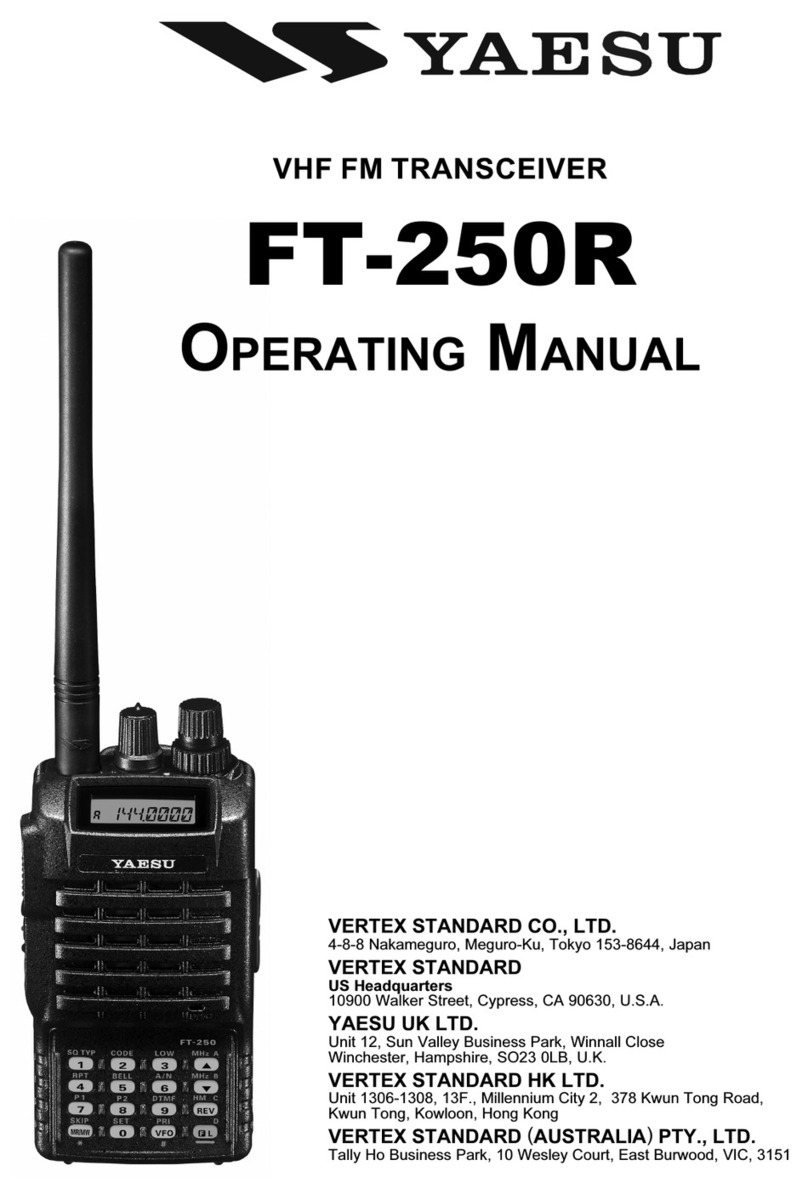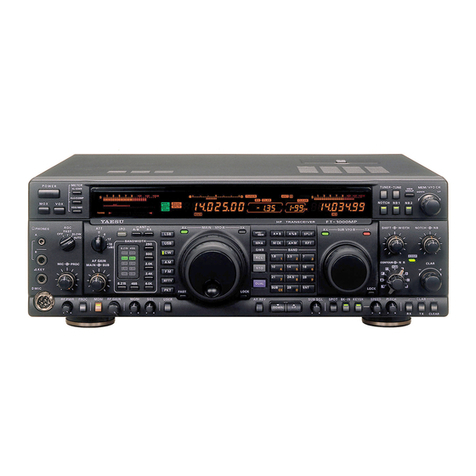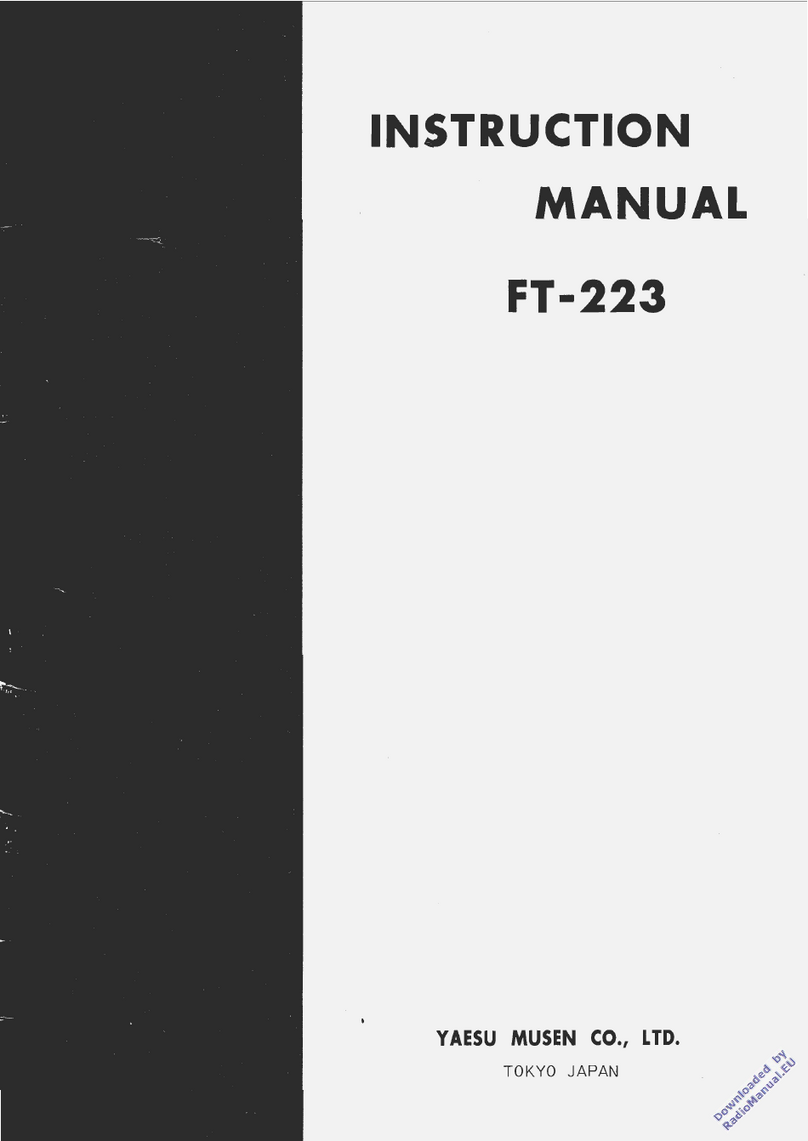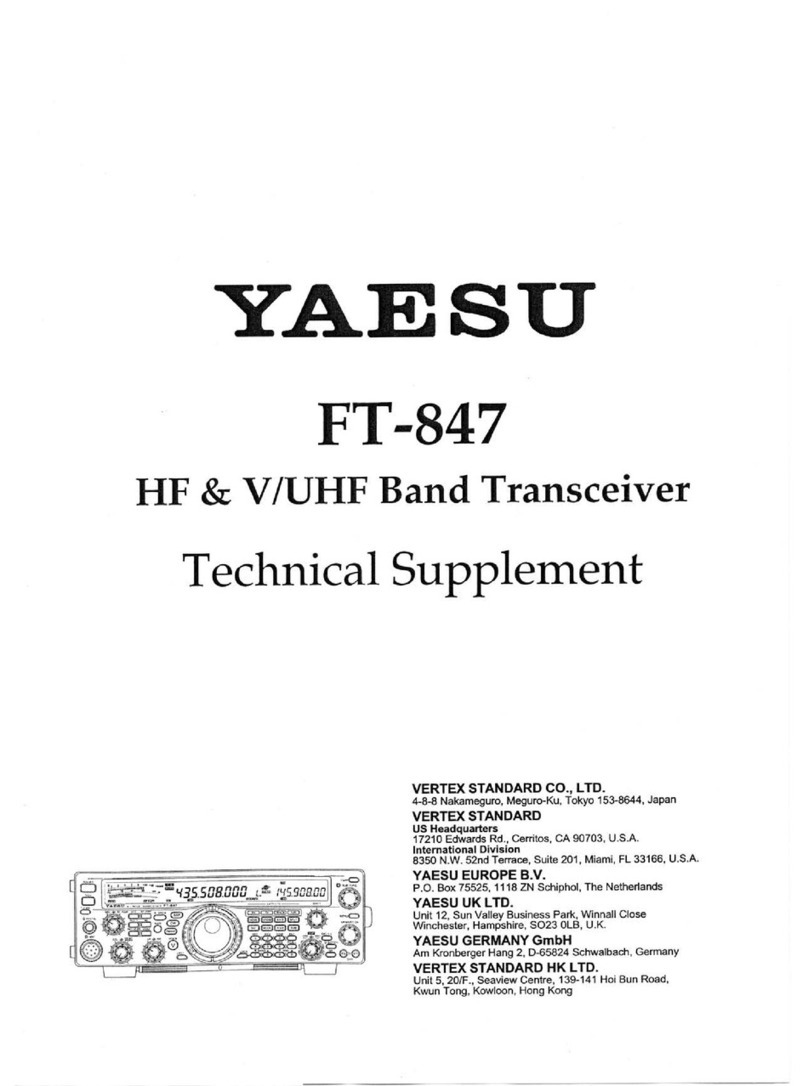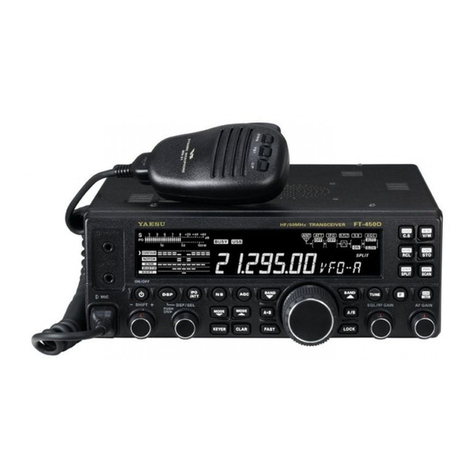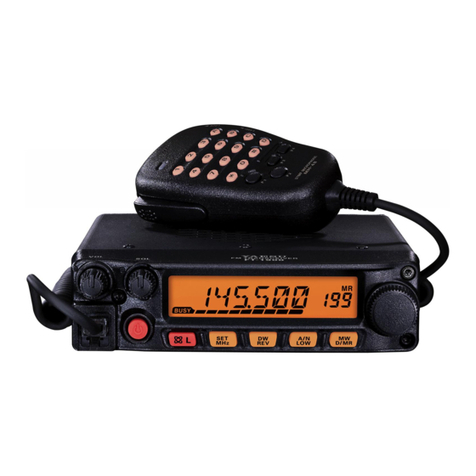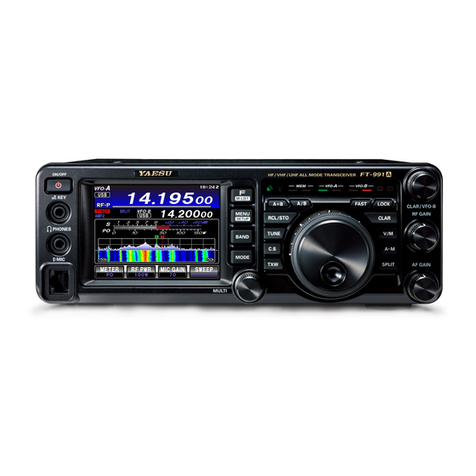
2
Table of Contents
General Description........................................4
Safety Precautions .........................................6
Accessories & Options ...................................8
Supplied Accessories ........................................ 8
Available options ............................................... 8
Installation and Interconnections....................9
Antenna Considerations .................................... 9
Antenna Connections ........................................ 9
Power Cable Connections................................. 9
Microphone, Headphone, Key,
Keyer and FH-2 Connections .......................... 10
Linear Amplier Interconnections .................... 11
VL-1000 Linear Amplier Interconnections.. 11
Interfacing to Other Linear Ampliers .......... 11
Display connections ........................................ 12
Remote operation (LAN unit “SCU-LAN10”)
connection ....................................................... 12
Rear Panel....................................................13
SSM-75E Microphone Switches...................15
Display Indications........................................16
Keyboard Frequency Entry.......................... 18
Tuning in 1 MHz or 1 kHz Steps.................. 18
When the clarier function is active............. 18
Select the roong lter................................. 20
Turn the spectrum display OFF ................... 20
ATT (Attenuator).......................................... 22
IPO .............................................................. 22
R.FIL (Roong Filter Switching)................... 22
AGC (Automatic Gain Control) .................... 23
CENTER/CURSOR/FIX .............................. 24
CENTER...................................................... 24
CURSOR..................................................... 24
FIX............................................................... 25
3DSS ........................................................... 25
MULTI.......................................................... 25
EXPAND...................................................... 26
SPAN........................................................... 26
SPEED ........................................................ 26
LEVEL ......................................................... 27
PEAK........................................................... 27
MARKER ..................................................... 28
COLOR........................................................ 28
Adjust contrast............................................. 28
Adjusting the brightness (DIMMER) ............ 28
Other display settings...................................... 29
Screen Saver............................................... 29
Inputting the Call Sign ................................. 29
LED Indications ............................................... 31
Adjust the brightness of the LED indicator .. 31
Front Panel Controls & Switches..................32
Adjusts the VOX GAIN ................................ 32
Adjusts the VOX Delay Time ....................... 32
Adjusts the VOX anti-trip sensitivity ............ 33
Adjusting the Noise Blanker Level............... 34
Adjusting the Noise Attenuation .................. 34
Reduces longer duration pulse noise.......... 34
Adjusting the DNR Level ............................. 35
Switching the operation of the
[RF/SQL] knob............................................. 35
QMB Channel Storage ................................ 35
QMB Channel Recall................................... 35
Changing the number of ............................. 35
QMB channels............................................. 35
RX Clarier ................................................. 37
Adjust transmit frequency to the
oset frequency........................................... 37
TX Clarier .................................................. 37
To oset the frequency with the
TX Clarier Adjust receive frequency .......... 37
How to assign functions .............................. 38
Quick Split Operation .................................. 41
Direct input of oset frequency.................... 41
Adjust the GAIN of the ................................ 43
CONTOUR Circuit ....................................... 43
Sets the Bandwidth (“Q”) of the................... 43
CONTOUR Circuit ....................................... 43
Voice Communications (SSB and AM) .........46
When transmitting in SSB or AM mode ........... 46
Speech Processor ........................................... 47
RF Power output control.................................. 47
MONI (Monitor)................................................ 47
Parametric Microphone Equalizer ................... 48
Setup the Parametric Microphone
Equalizer ..................................................... 48
Activate the Parametric Microphone
Equalizer ..................................................... 48
Voice Memory.................................................. 50
Recording Your Own Voice in Memory........ 50
Checking the Recording .............................. 50
Transmitting the Recorded Message .......... 50
Record the received audio .............................. 51
Recording the received sudio...................... 51
Play the recorded content ........................... 51
Erase the recorded content ......................... 51
Adjustable Receiver Audio Filter ..................... 52
Change the sound quality of the
received audio ................................................. 53
Using the Automatic Antenna Tuner ................ 54
ATU Operation............................................. 54
CW Mode Operation.....................................56
Adjusting the Sidetone Audio level .............. 56
CW Delay Time Setting ............................... 56


